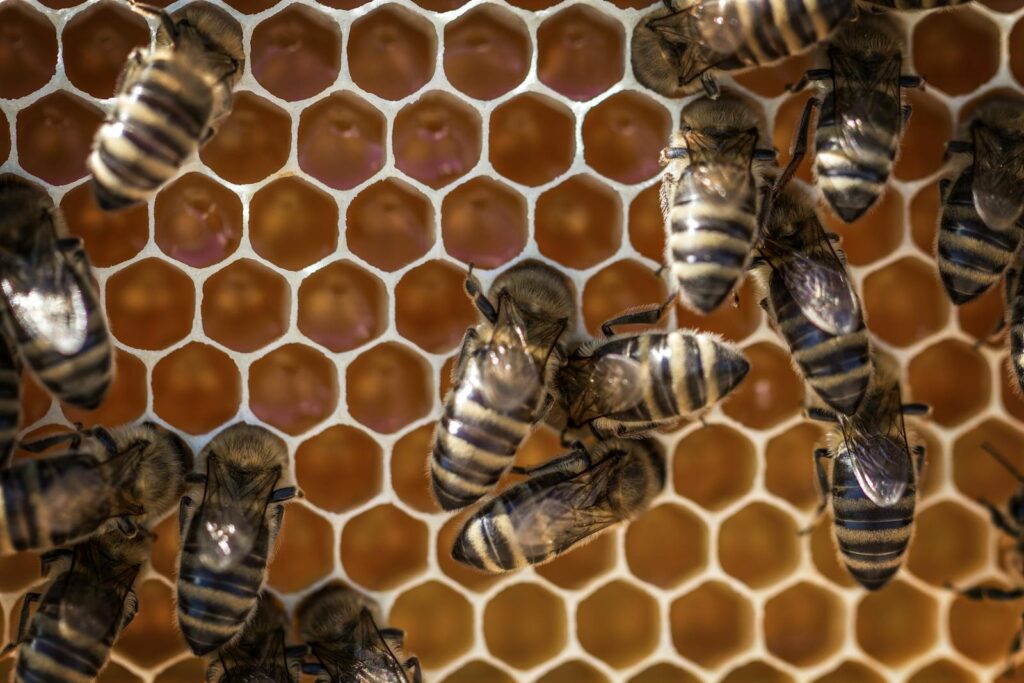
In the intricate tapestry of nature, a fascinating phenomenon exists that bridges the worlds of biology and mathematics. Insects, particularly social species like bees and ants, demonstrate an uncanny ability to create and utilize mathematical patterns in their daily lives. These tiny creatures, often overlooked in our day-to-day existence, are in fact natural mathematicians, employing complex geometric principles and numerical patterns without formal education or conscious understanding. From the hexagonal precision of honeycomb cells to the efficient pathfinding algorithms of ant colonies, these insects showcase nature’s inherent mathematical elegance. This article explores how these remarkable creatures incorporate mathematical principles into their survival strategies, structures, and social organizations, revealing the beautiful intersection of instinct and mathematical order in the natural world.
The Perfect Hexagons of Honeybee Architecture
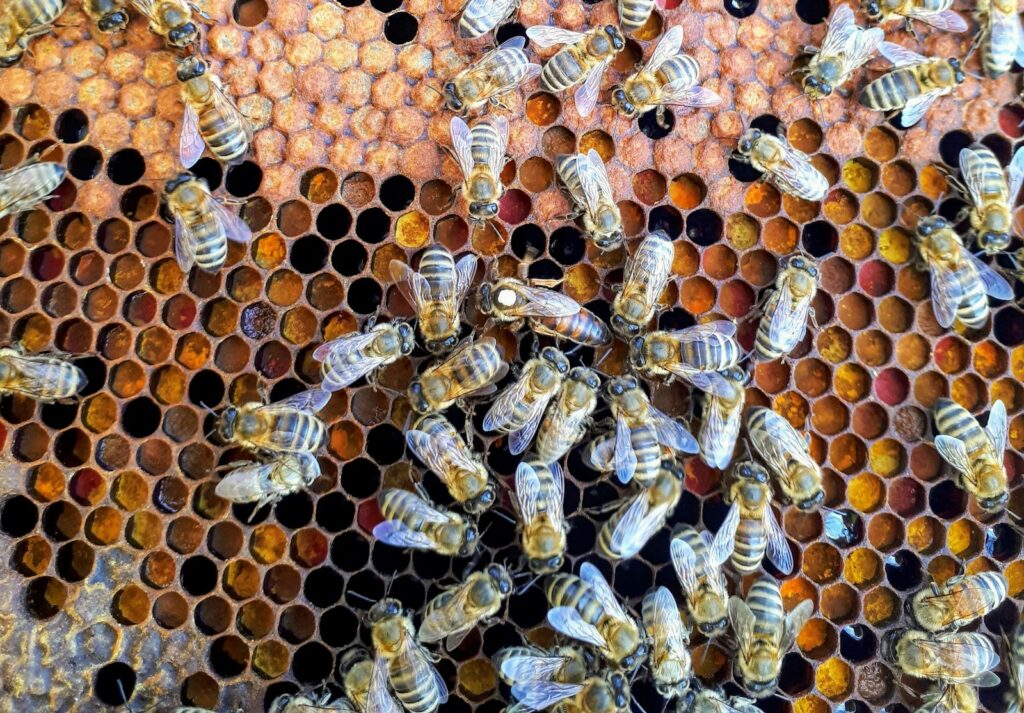
Honeybees are nature’s master architects, constructing honeycombs with perfect hexagonal cells that maximize space efficiency while minimizing material usage. This geometric choice isn’t random – mathematicians have proven that hexagons provide the most efficient way to divide a surface into regions of equal area with the least total perimeter. Each honeycomb cell requires approximately 35 milligrams of wax to construct, but can hold around 300 milligrams of honey, demonstrating remarkable material efficiency. The precision is astonishing – worker bees maintain consistent 120-degree angles between cell walls with a variation of less than one degree, despite working in the darkness of the hive and constructing cells from different directions. This mathematical precision emerges from collective behavior rather than individual understanding, with thousands of bees contributing to structures that optimize both storage capacity and structural integrity.
Fibonacci Sequences in Bee Family Trees
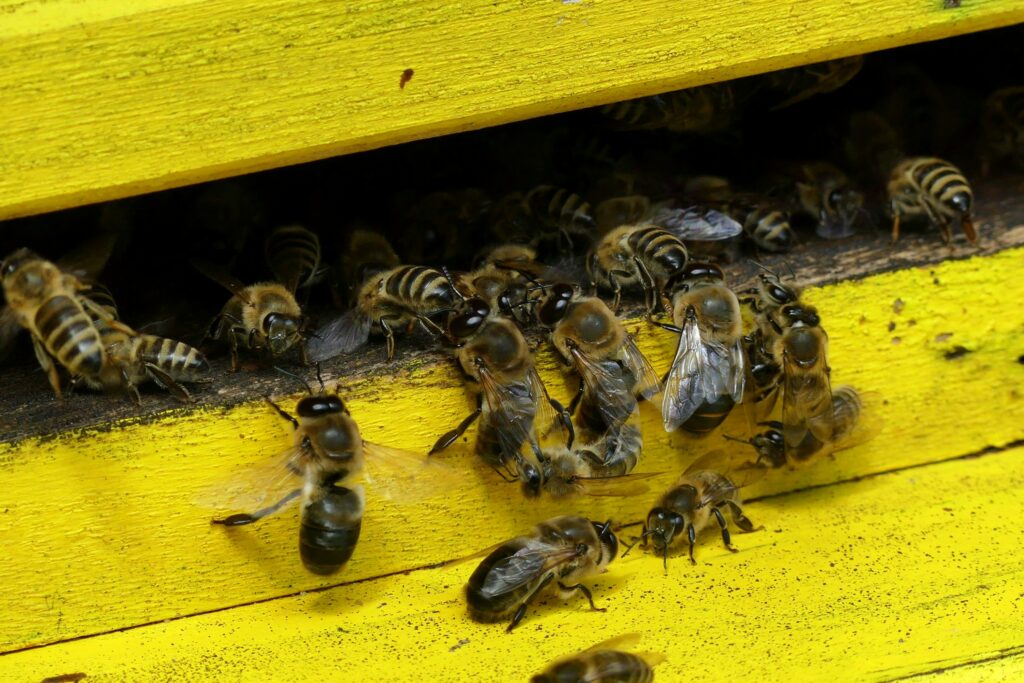
The famous Fibonacci sequence (0, 1, 1, 2, 3, 5, 8, 13…) appears unexpectedly in honeybee reproduction through haplodiploidy – a sex-determination system where females develop from fertilized eggs (with two parents) while males develop from unfertilized eggs (having only a mother). This creates a fascinating mathematical pattern in bee ancestry. If you trace a male bee’s family tree backward, counting ancestors in each generation, you’ll find the exact Fibonacci sequence. A male bee has 1 parent (his mother), 2 grandparents (his mother’s parents), 3 great-grandparents, 5 great-great-grandparents, and so on, following the Fibonacci pattern perfectly. This mathematical relationship wasn’t discovered until the 20th century, yet bees have embodied this sequence throughout their evolutionary history, showcasing how mathematical patterns can emerge naturally from biological processes.
Ant Colonies and Shortest Path Algorithms

Ants collectively solve complex optimization problems that challenge human mathematicians, particularly when finding the shortest paths between locations. When foraging, ants deposit pheromone trails that strengthen with use, effectively implementing a biological version of what computer scientists call an “optimization algorithm.” Research has shown that ant colonies reliably find near-optimal solutions to variations of the Traveling Salesman Problem – a notoriously difficult mathematical challenge of finding the shortest possible route that visits a set of points exactly once. The process works through positive feedback: shorter paths allow ants to complete their journey faster, resulting in stronger pheromone concentrations that attract more ants, further reinforcing efficient routes. Computer scientists have developed Ant Colony Optimization algorithms inspired by this natural process, which are now used to solve complex problems in telecommunications routing, vehicle scheduling, and internet packet delivery.
The Mathematics of Foraging Patterns
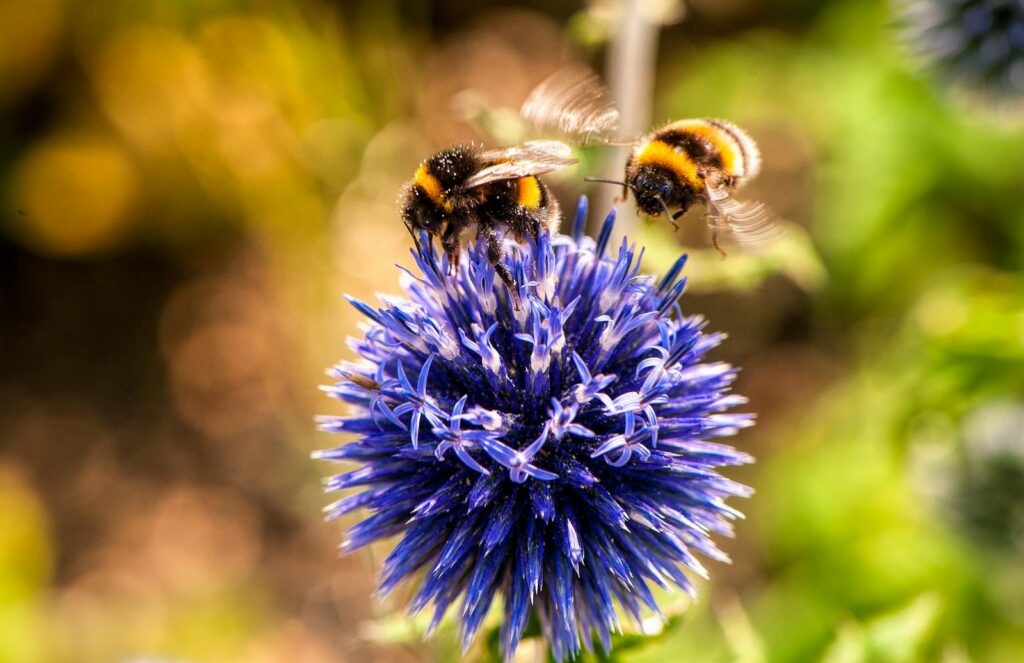
Bee foraging behaviors follow sophisticated mathematical distributions that optimize resource collection. Studies tracking foraging patterns reveal that bees implement what mathematicians call a “Lévy flight” pattern – a random walk characterized by many short movements combined with occasional long jumps. This mathematical distribution has been proven optimal for searching environments where resources are sparsely and randomly distributed. Individual bees adjust their foraging patterns based on resource availability, effectively solving complex probability calculations through instinctive behavior. Research using harmonic radar tracking has shown that bees can remember and calculate the most efficient routes between multiple food sources, creating optimized “traplines” that minimize travel distance while maximizing nectar collection – essentially solving a version of the aforementioned Traveling Salesman Problem through direct experience rather than abstract calculation.
Distributed Intelligence and Quorum Sensing

Ant and bee colonies demonstrate sophisticated decision-making through quorum sensing – a mathematical process of collective choice that often achieves optimal outcomes. When honeybees search for new nest sites, scout bees independently evaluate potential locations and recruit others proportionally to site quality through waggle dances. The colony makes decisions when support for a particular site reaches a mathematical threshold (quorum) of approximately 15-20 scout bees, representing a precise balancing point between decision speed and accuracy. Similar mathematical thresholds appear in ant colony decisions about new nest sites, with the quorum number precisely calibrated to colony size. These threshold-based decision systems effectively implement statistical analysis at the colony level, allowing accurate decisions to emerge from the aggregate of many imperfect individual assessments – a biological implementation of the mathematical “wisdom of crowds” principle.
Symmetry and Patterning in Insect Structures

Mathematical symmetry principles govern many aspects of insect-built structures beyond the famous honeycomb. Paper wasps construct nests with remarkably consistent radial symmetry, while termite mounds incorporate complex ventilation systems that maintain temperature within one degree Celsius through principles of fluid dynamics and thermodynamics. Weaver ants collaboratively create leaf nests by forming living chains that pull leaves together with precise application of force from multiple directions, solving complex problems in structural engineering. The spiral patterns in certain ant nest constructions follow logarithmic curves similar to those found in nautilus shells and galaxy formations, demonstrating nature’s tendency to replicate specific mathematical relationships across diverse contexts. These symmetrical structures emerge not from centralized planning but from simple rules followed by individual insects, illustrating how complex mathematical patterns can arise from relatively simple behavioral algorithms.
Time-Keeping and Circadian Mathematics
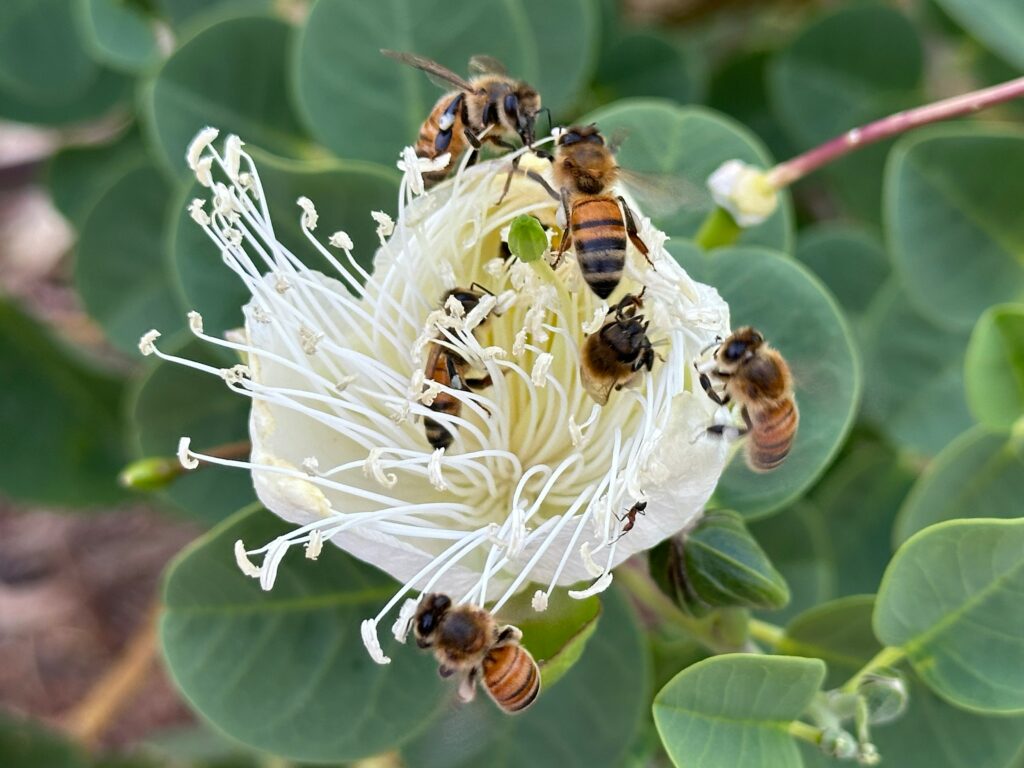
Bees possess remarkable mathematical abilities for time measurement, displaying what scientists call “time-sense” or internal clocks that allow precise scheduling of activities. Experiments have demonstrated that honeybees can be trained to visit specific feeding stations at particular times of day with accuracy within minutes, effectively performing complex time calculations. This temporal precision extends to understanding the movement of the sun throughout the day, with bees compensating for this movement when communicating food source locations through their waggle dances. The mathematical precision extends to memory duration – studies show bees can remember reward timing for up to six days with consistent accuracy. This sophisticated time-keeping ability represents a form of mathematical processing that helps coordinate colony activities and optimize resource collection across changing daily and seasonal conditions.
The Golden Ratio in Insect Morphology

The golden ratio (approximately 1:1.618), a mathematical proportion found throughout nature and considered aesthetically pleasing to humans, appears in various aspects of insect morphology. Analysis of honeybee body proportions reveals segments that often relate to each other in ratios approximating this mathematical constant. The spiraling patterns of certain ant species’ nest entrance tunnels frequently exhibit golden ratio proportions, optimizing traffic flow efficiency. Even the wing proportions of many bee species demonstrate this mathematical relationship, potentially optimizing aerodynamic properties. These instances of the golden ratio in insect structures suggest that evolutionary processes naturally select for certain mathematical proportions that confer functional advantages, whether in structural stability, movement efficiency, or resource utilization. The prevalence of this specific ratio across diverse biological contexts represents one of nature’s most intriguing mathematical signatures.
Numerical Cognition in Insects

Recent research has revealed surprising numerical abilities in individual insects, suggesting mathematical processing beyond collective behaviors. Experiments have demonstrated that honeybees can distinguish between different quantities, understand the concept of zero, and even perform simple addition and subtraction when trained with color-coded signals. These cognitive abilities were once thought exclusive to vertebrates with larger brains. Ants display similar numerical cognition, with some species able to count their steps for navigation and estimate quantities of resources when making collective decisions. Experiments with Temnothorax ants show they can assess the precise number of ants required for specific tasks, allocating resources with mathematical efficiency. These discoveries challenge our understanding of insect cognition and suggest that mathematical processing may be more fundamental to animal nervous systems than previously believed.
Network Theory in Ant Communication Systems

Ant colonies operate communication networks that mathematically resemble optimized human-engineered systems like the internet. The pattern of interactions between ants follows specific mathematical distributions that balance robustness with efficiency, creating resilient networks that can adapt to disruptions. Studies mapping interaction patterns show that information propagates through ant colonies following power law distributions similar to those found in efficient human communication networks. The structure creates mathematically optimal “small-world networks” where information can reach any individual through relatively few intermediate connections. These communication networks dynamically adjust their mathematical properties based on colony needs, becoming more centralized during emergencies and more distributed during routine operations. The mathematical principles underlying these networks have inspired algorithmic approaches to designing resilient human technologies, from telecommunications systems to social media platforms.
Temperature Regulation and Fluid Dynamics
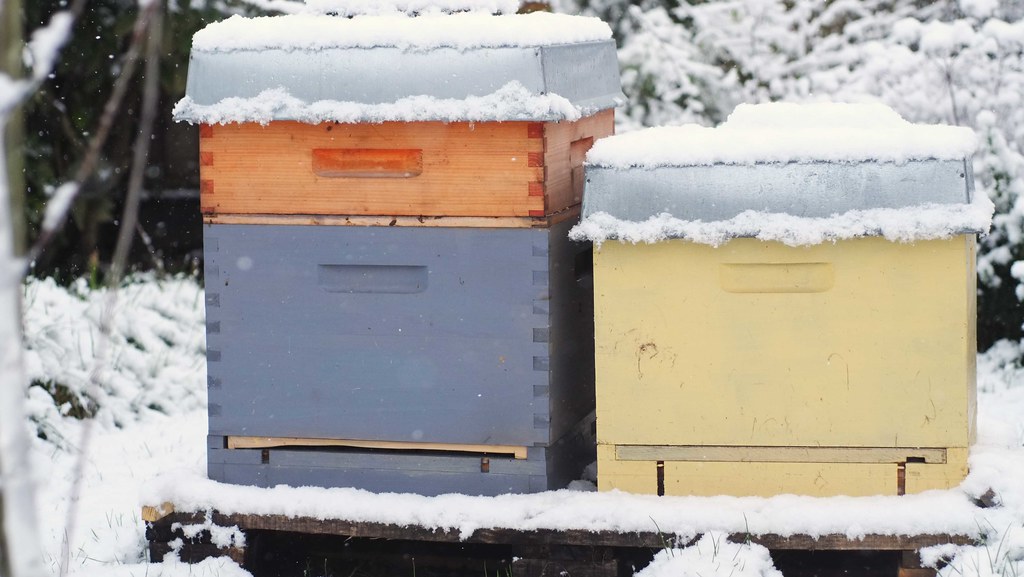
Social insects implement sophisticated mathematical principles of thermodynamics and fluid dynamics to maintain optimal nest conditions. Honeybee colonies regulate internal hive temperature within a precise range of 33-36°C (91-97°F) regardless of external conditions, a remarkable feat of collective thermodynamics. This regulation occurs through coordinated behaviors that follow mathematical proportions – as temperature deviates from the optimal range, the number of bees engaged in heating or cooling behaviors increases proportionally to the magnitude of deviation. Similar mathematical principles appear in the ventilation systems of complex ant and termite nests, which implement countercurrent heat exchange mechanisms to regulate both temperature and humidity. The structure of termite mound ventilation tunnels follows precise mathematical ratios that optimize air flow based on principles of fluid dynamics, creating self-cooling systems that maintain optimal conditions without external power sources.
Division of Labor and Statistical Distribution

The allocation of workers to different tasks within ant and bee colonies follows sophisticated statistical distributions that optimize colony efficiency. Studies reveal that the proportion of workers assigned to various roles (foraging, nursing, defense, etc.) follows mathematical models that respond dynamically to colony needs and environmental conditions. This distribution isn’t random but follows power laws and other mathematical relationships that ensure appropriate resource allocation. The age polyethism system, where workers progress through different roles as they age, creates a statistical distribution that ensures continuity of all essential functions. Research shows that these distributions maintain mathematical properties of resilience, with the ability to rapidly adjust worker proportions following disruptions while maintaining essential functions. The mathematical precision of these distributions emerges without centralized control, demonstrating how complex statistical optimization can arise from relatively simple individual decision rules multiplied across thousands of colony members.
Evolutionary Algorithms and Adaptation
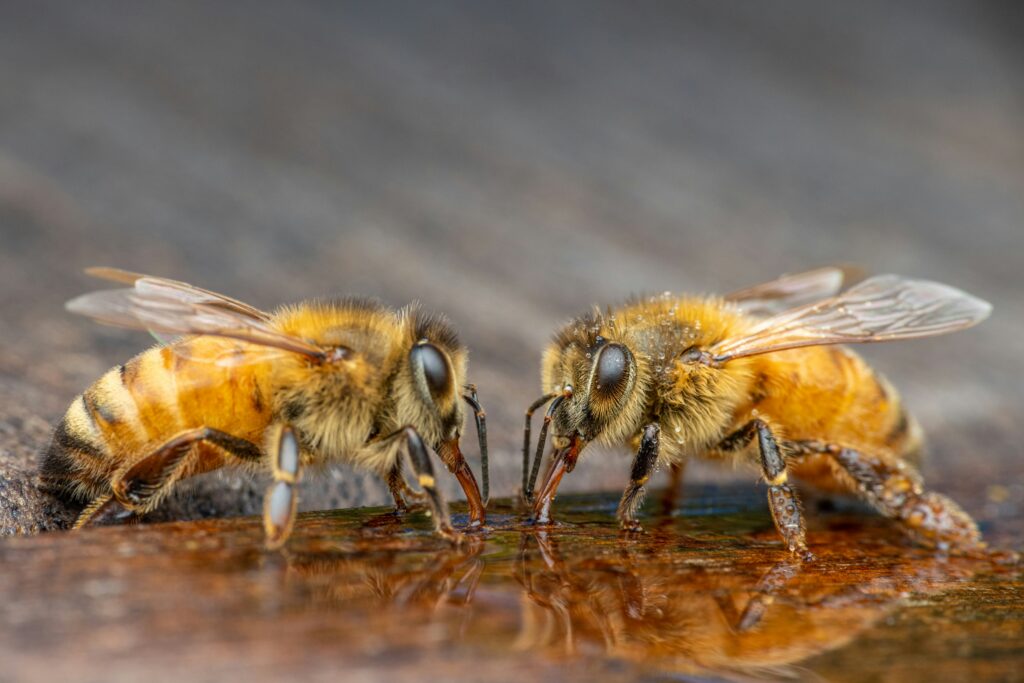
The mathematical patterns exhibited by social insects represent solutions to complex optimization problems that have been refined through evolutionary processes over millions of years. Each generation of colonies faces selection pressures that favor more efficient mathematical solutions to survival challenges, gradually perfecting these patterns through natural selection. The resulting behaviors implement what computer scientists would recognize as genetic algorithms and evolutionary computation – mathematical approaches that find optimal solutions through iterative testing and refinement. The remarkable efficiency of these insect-derived mathematical solutions has inspired numerous biomimetic algorithms in human engineering, from optimization techniques to swarm robotics. Perhaps most fascinating is that these mathematical solutions have evolved independently multiple times – ants and bees are not closely related, yet have converged on similar mathematical strategies, suggesting these patterns represent optimal solutions to universal challenges in social organization and resource management.
Conclusion
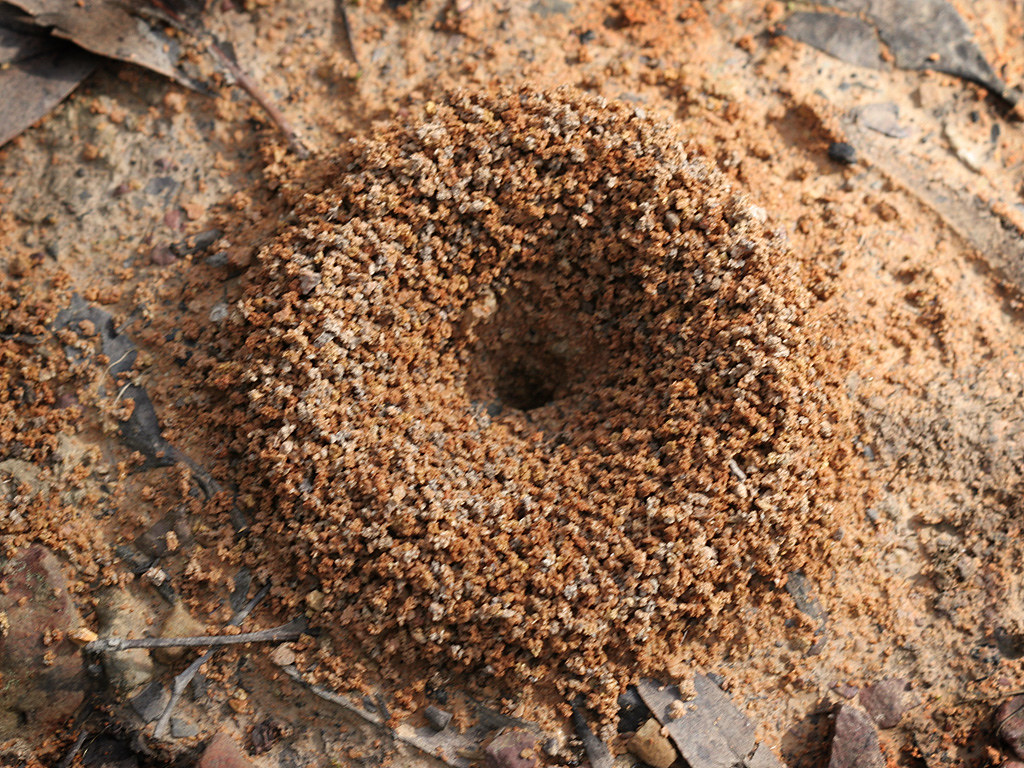
The mathematical abilities displayed by social insects like bees and ants reveal a profound truth about nature: mathematical principles aren’t human inventions but fundamental aspects of natural order. From the perfect hexagons of honeycombs to the optimization algorithms of ant foraging patterns, these insects implement sophisticated mathematical solutions without conscious understanding, revealing how evolutionary processes can produce remarkably efficient strategies through natural selection. These mathematical patterns demonstrate that nature inherently optimizes for efficiency, stability, and adaptability using principles that human mathematicians have only relatively recently formalized. By studying how insects unconsciously implement mathematical concepts, we gain insight into both the power of collective intelligence and the mathematical underpinnings of the natural world. In the end, the humble bee and industrious ant remind us that mathematics isn’t merely a human construct but a fundamental language through which the logic of life expresses itself.

